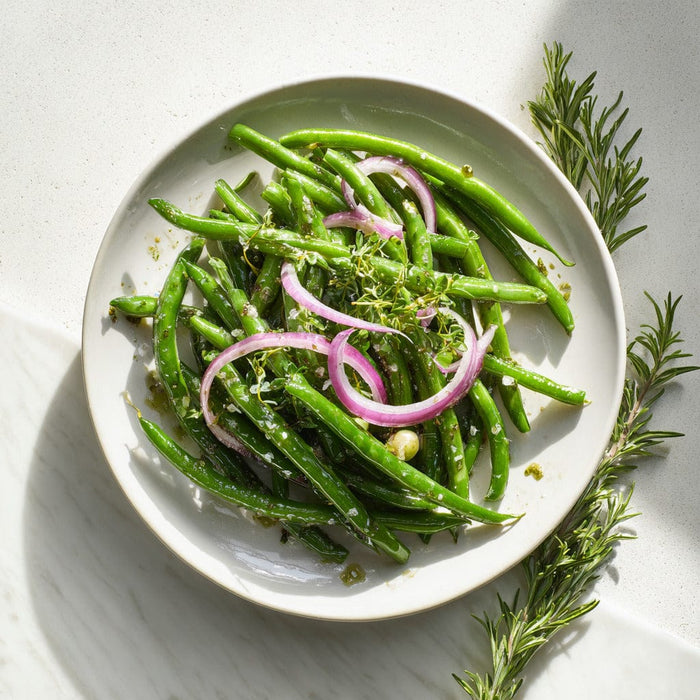
Embrace the Winter Salad Revolution
As the leaves fall and the air turns crisp, we often find ourselves gravitating towards hearty, warming dishes. But what if I told you that the ultimate winter comfort food might just be a salad? Imagine a vibrant plate filled with seasonal produce, crunchy toppings, and bright dressings that invigorate your palate. This is the essence of winter salads—a delightful way to celebrate the season's bounty while keeping your meals fresh and exciting.
In this blog, we’ll explore a curated selection of 43 Winter Salads that promise to brighten up your cold-weather meals. From grain-filled bowls to citrusy delights, these salads are packed with flavor and nourishment, making them perfect for any occasion. Let’s dive into the world of winter salads and discover how they can transform your dining experience!
Recipe Overview
Winter salads are not just about greens; they encompass a variety of ingredients that reflect the season's richness. These salads often feature hearty grains, roasted vegetables, and zesty dressings that provide warmth and comfort. The inspiration behind these recipes comes from various culinary traditions, showcasing how different cultures embrace winter produce. Whether you’re looking for a quick weekday dinner or a festive dish for a holiday gathering, these salads are versatile enough to fit any need.
Ingredients List
Here’s a comprehensive list of ingredients you’ll need to create a selection of these winter salads. Feel free to mix and match based on your preferences!
- Mixed greens (kale, spinach, arugula)
- Root vegetables (beets, carrots, sweet potatoes)
- Whole grains (quinoa, farro, bulgur)
- Fruits (citrus, apples, pears, pomegranate)
- Nuts and seeds (walnuts, pecans, pumpkin seeds)
- Cheese (feta, goat cheese, blue cheese)
- Proteins (chicken, salmon, chickpeas)
- Fresh herbs (parsley, mint, cilantro)
- Dressings (olive oil, balsamic vinegar, tahini)
- Spices (cumin, paprika, chili flakes)
For dietary needs, consider these substitutions:
- Vegan: Replace cheese with avocado or nutritional yeast.
- Gluten-Free: Use quinoa or rice instead of wheat-based grains.
- Nut-Free: Omit nuts and seeds; use sunflower seeds for crunch.
Step-by-Step Instructions
Here’s how to prepare a few standout winter salads from our collection:
1. Hot-Smoked Salmon Noodle Salad
- Cook soba noodles according to package instructions; drain and rinse under cold water.
- In a bowl, whisk together Japanese hot mustard, sesame oil, and soy sauce.
- Toss the noodles with the dressing, flaked hot-smoked salmon, and sliced scallions.
- Serve warm, garnished with sesame seeds and additional scallions.
2. Avocado and Bulgur Salad
- Cook bulgur according to package instructions; let cool.
- In a large bowl, combine cooked bulgur, diced avocado, charred scallions, and slivered jalapeños.
- Drizzle with olive oil and lime juice; season with salt and pepper.
- Toss gently and serve chilled or at room temperature.
3. Beets and Farro with Honey-Garlic Goat Cheese
- Preheat the oven to 400°F (200°C). Roast beets until tender, about 45 minutes.
- Cook farro according to package instructions; drain and set aside.
- In a small bowl, mix goat cheese with honey and minced garlic.
- Combine roasted beets, farro, and honey-garlic goat cheese in a serving bowl.
- Drizzle with olive oil and balsamic vinegar before serving.
Nutritional Benefits and Health Advantages
Winter salads are not only delicious but also packed with nutritional benefits. Here are some key highlights:
- Leafy Greens: Rich in vitamins A, C, and K, which support immune function and bone health.
- Root Vegetables: High in fiber and antioxidants, helping to promote digestive health.
- Whole Grains: Provide sustained energy and are a great source of protein and fiber.
- Nuts and Seeds: Packed with healthy fats, protein, and essential nutrients.
- Fruits: Add natural sweetness and are rich in vitamins and minerals.
Incorporating these salads into your diet can help you maintain a balanced and nutritious eating plan, especially during the colder months when fresh produce is abundant.
Serving Suggestions
To elevate your winter salads, consider these serving suggestions:
- Pair with a warm, crusty bread or a side of roasted vegetables.
- Top with a sprinkle of feta or goat cheese for added creaminess.
- Drizzle with a homemade vinaigrette or tahini dressing for extra flavor.
- Serve alongside a glass of citrus-infused sparkling water or a light white wine.
For a beautiful presentation, consider using a large, shallow bowl to showcase the vibrant colors of the ingredients. Garnish with fresh herbs or edible flowers for an added touch of elegance.
Occasion and Usage Tips
Winter salads are incredibly versatile and can be enjoyed on various occasions:
- Weeknight Dinners: Quick to prepare and perfect for a healthy meal after a long day.
- Holiday Gatherings: Impress your guests with colorful and festive salads that complement your main dishes.
- Meal Prep: Make a big batch to enjoy throughout the week; many salads taste even better the next day!
Feel free to adapt these recipes to suit your taste preferences. Add your favorite proteins, switch up the dressings, or experiment with different grains and vegetables. The possibilities are endless!
Why You Absolutely Must Try These Winter Salads
Winter salads are a celebration of seasonal ingredients, creativity, and nourishment. They offer a refreshing contrast to the heavier dishes we often associate with winter, proving that salads can be satisfying and comforting. With their vibrant colors, diverse textures, and bold flavors, these salads are sure to brighten your cold-weather meals.
So, grab your salad spinner, raid your pantry, and get ready to create these delightful winter salads. We can’t wait to hear about your culinary adventures—share your creations with us on social media or in the comments below!




